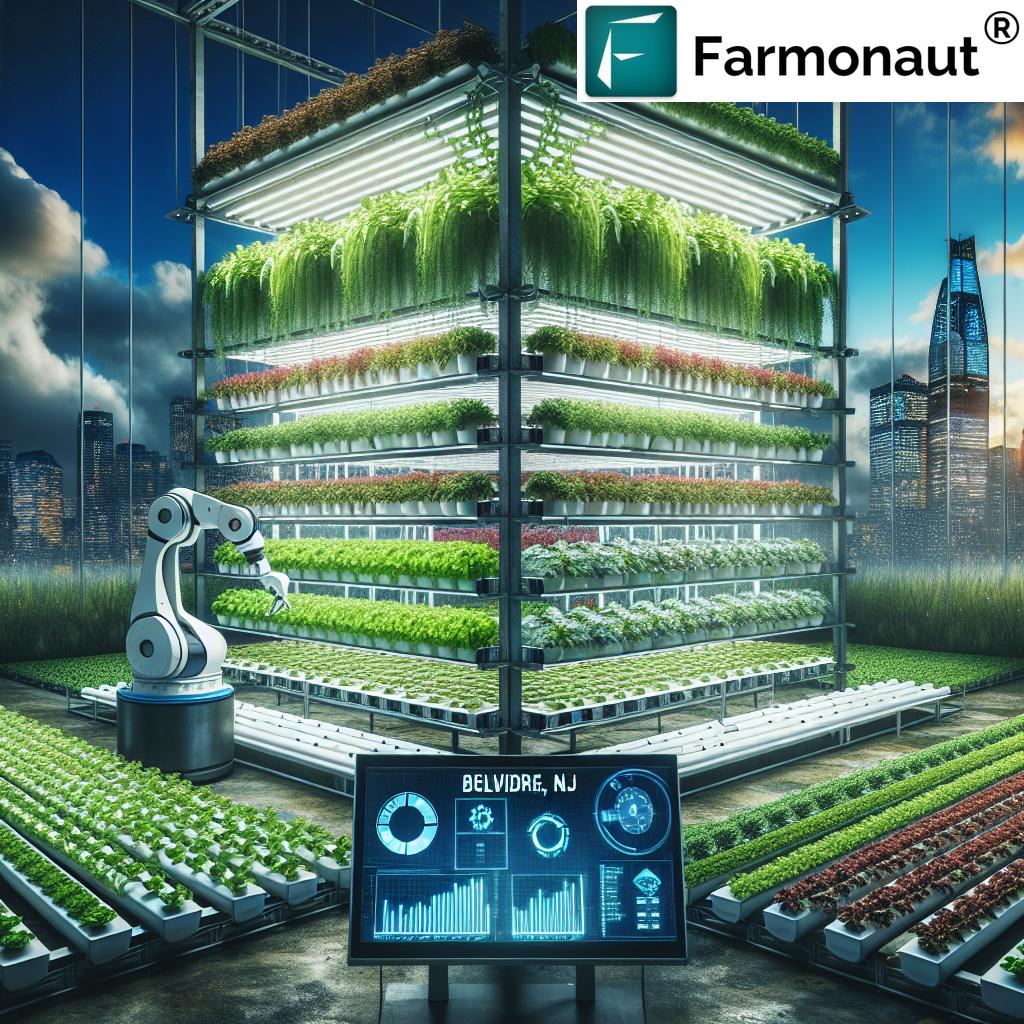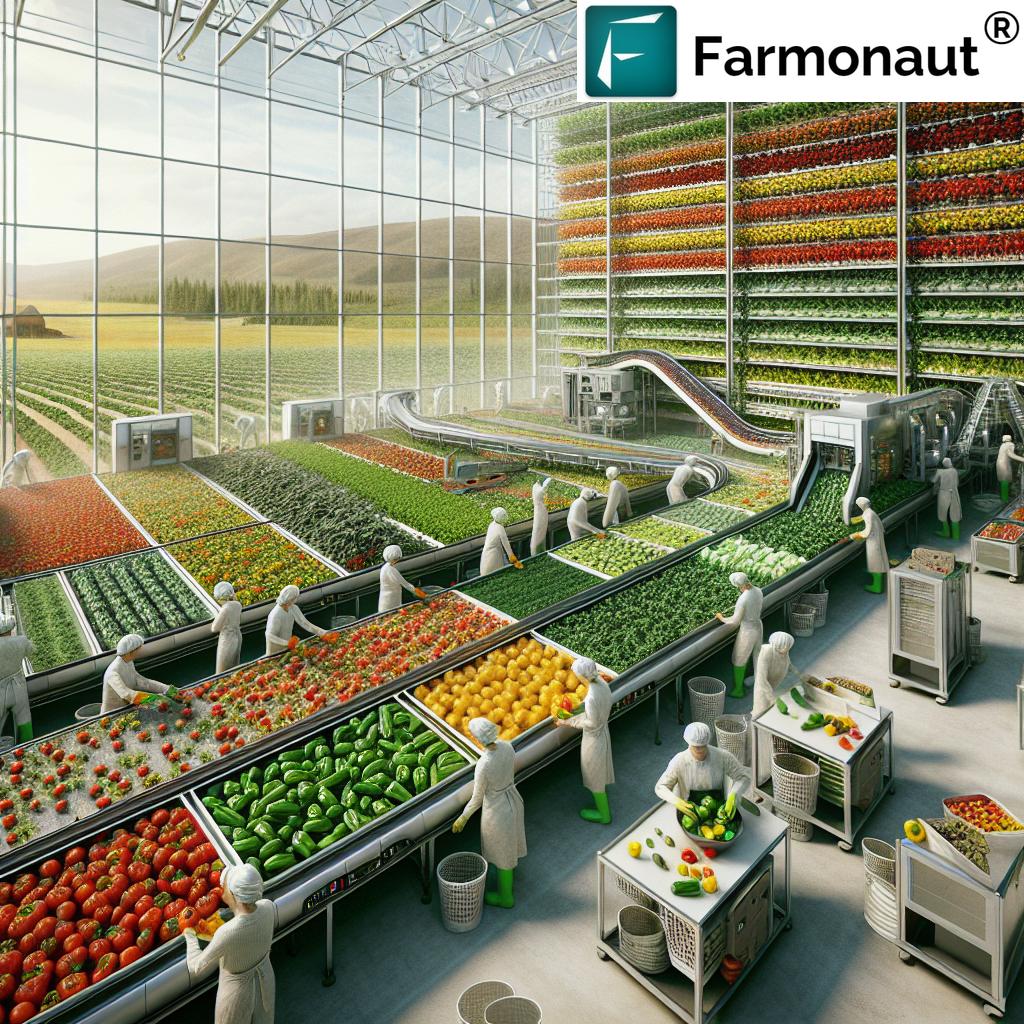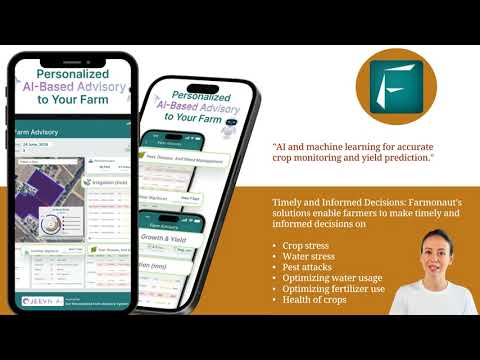Revolutionizing New Jersey Agriculture: Sustainable CEA Technology Boosts Locally Grown Organic Produce
“CEA technology has enabled a 95% reduction in water usage compared to traditional farming methods.”
In the heart of the Garden State, a green revolution is taking root. We’re witnessing a transformative era in New Jersey’s agricultural landscape, where sustainable agriculture technology is reshaping the way we grow, distribute, and consume locally grown organic produce. At the forefront of this innovation is controlled environment agriculture (CEA), a cutting-edge approach that’s not just changing farms—it’s changing the future of food.
As we delve into the world of CEA and its impact on New Jersey’s agriculture, we’ll explore how this technology is addressing critical challenges in food security, environmental sustainability, and economic growth. From innovative greenhouse management systems to zero-waste farming practices, we’re uncovering the seeds of change that are sprouting in our very own backyard.
The Rise of Controlled Environment Agriculture in New Jersey
Controlled environment agriculture is more than just a trend; it’s a necessity in the face of climate change and growing food demand. In New Jersey, CEA is taking center stage, offering solutions that promise year-round production, reduced environmental impact, and enhanced food quality.

Let’s break down the key components of CEA that are making waves in the Garden State:
- Advanced Greenhouse Systems: State-of-the-art greenhouses equipped with climate control, LED lighting, and hydroponic systems are allowing farmers to grow crops 365 days a year, regardless of outdoor conditions.
- Vertical Farming: By stacking growing areas vertically, farmers are maximizing space efficiency and producing more food per square foot than ever before.
- Precision Agriculture: Cutting-edge sensors and data analytics are enabling farmers to monitor and adjust growing conditions in real-time, optimizing plant health and yield.
These advancements are not just theoretical; they’re being put into practice right here in New Jersey. Companies like Edible Garden AG Incorporated are leading the charge, implementing CEA technologies that are setting new standards for sustainability and efficiency in agriculture.
Innovative Greenhouse Management: The GreenThumb Revolution
At the heart of the CEA revolution is innovative greenhouse management, exemplified by patented technologies like Edible Garden’s GreenThumb software. This advanced system is redefining what’s possible in controlled environment agriculture.
GreenThumb is more than just a management tool; it’s a comprehensive solution that:
- Optimizes crop yields through data-driven decision making
- Enhances efficiency by automating climate control and irrigation
- Reduces waste by precisely managing resources
- Improves crop quality through constant monitoring and adjustment
The impact of such technology on New Jersey’s agricultural sector cannot be overstated. By implementing GreenThumb and similar systems, local farmers are seeing:
- Increased productivity per square foot
- Reduced water and energy consumption
- Higher quality, more consistent produce
- Extended growing seasons, enabling year-round production
This level of precision and control is transforming greenhouses from simple growing spaces into high-tech food production facilities, capable of meeting the demands of a growing population while minimizing environmental impact.
Zero-Waste Farming: A Sustainable Path Forward
In the quest for sustainability, zero-waste farming practices are emerging as a crucial component of CEA. These practices aim to eliminate waste at every stage of the growing process, from seed to harvest and beyond.
Key aspects of zero-waste farming include:
- Circular Resource Management: Recycling water, nutrients, and organic matter within the growing system
- Precision Planting and Harvesting: Minimizing crop loss through careful planning and execution
- Upcycling of Plant Waste: Converting unused plant material into compost or other value-added products
- Packaging Innovation: Developing and using eco-friendly, biodegradable packaging solutions
By adopting these practices, New Jersey farms are not only reducing their environmental footprint but also improving their bottom line. The result is a more resilient and sustainable agricultural sector that’s better equipped to face future challenges.
Vertical Farming: Reaching New Heights in Crop Production
“Advanced software in vertical farming has increased crop yields by up to 400% in some controlled environments.”
Vertical farming is revolutionizing the way we think about agricultural space. In New Jersey, where land is at a premium, this innovative approach is allowing farmers to produce more food in less space, with less environmental impact.
The benefits of vertical farming are numerous:
- Space Efficiency: Grow more crops in a smaller footprint
- Water Conservation: Use up to 95% less water than traditional farming methods
- Reduced Transportation Costs: Produce can be grown closer to urban centers
- Year-Round Production: Climate control allows for consistent crop growth regardless of season
In New Jersey, vertical farming is not just a concept—it’s a reality that’s changing the face of urban and peri-urban agriculture. By integrating vertical farming techniques with CEA technology, local growers are pushing the boundaries of what’s possible in sustainable food production.
Extending Shelf Life: Innovation at the Retail Level
The journey of fresh produce doesn’t end at the farm. Innovative display systems, like Edible Garden’s patented self-watering technology, are extending the shelf life of fruits and vegetables at retail locations across New Jersey.
These advanced display systems offer multiple benefits:
- Maintain optimal humidity levels for produce
- Reduce water loss and wilting
- Minimize food waste at the retail level
- Improve the visual appeal of produce displays
By implementing these technologies, New Jersey retailers are not only reducing waste but also providing consumers with fresher, longer-lasting produce. This innovation represents a crucial link in the chain of sustainable food distribution, ensuring that the benefits of CEA extend all the way to the consumer’s table.
The Economic Impact of Sustainable CEA in New Jersey
The adoption of sustainable CEA technologies is having a significant economic impact on New Jersey’s agricultural sector and beyond. Let’s break down the key economic benefits:
- Job Creation: The high-tech nature of CEA is creating new, skilled jobs in agriculture and related industries
- Increased Revenue: Higher yields and year-round production are boosting farm incomes
- Reduced Costs: Efficient resource use is lowering operational expenses for farmers
- Local Economic Growth: CEA is supporting the development of local food systems and related businesses
As CEA continues to grow in New Jersey, we can expect to see ripple effects throughout the state’s economy, from increased agricultural exports to the development of new agtech startups and support industries.
Sustainable Food Distribution: Closing the Loop
The final piece of the sustainable agriculture puzzle is distribution. In New Jersey, CEA is enabling a more localized, efficient food distribution system that reduces transportation costs and carbon emissions.
Key aspects of sustainable food distribution include:
- Local Food Hubs: Centralized facilities for aggregating and distributing locally grown produce
- Direct-to-Consumer Models: Subscription services and farm-to-table initiatives that connect growers directly with consumers
- Smart Logistics: Using data and technology to optimize delivery routes and reduce food miles
By focusing on sustainable distribution, New Jersey is not only supporting its local farmers but also ensuring that the benefits of CEA—fresher produce, lower environmental impact, and stronger local economies—are fully realized across the state.
The Future of Plant-Based Sustainable Products
As CEA technology advances, we’re seeing a growing trend towards plant-based sustainable products. This goes beyond just fresh produce to include:
- Plant-based proteins and meat alternatives
- Sustainable packaging materials derived from plant waste
- Nutraceuticals and functional foods grown in controlled environments
In New Jersey, companies like Edible Garden are at the forefront of this trend, developing new plant-based products that align with consumer demand for sustainable, healthy options. This diversification not only adds value to the agricultural sector but also positions New Jersey as a leader in the growing plant-based product market.
Impact on Food Security and Global Challenges
The innovations in CEA that we’re seeing in New Jersey have implications far beyond the state’s borders. These technologies are addressing critical global challenges:
- Food Security: Year-round production and higher yields can help meet growing food demand
- Climate Change Mitigation: Reduced resource use and lower emissions contribute to environmental sustainability
- Urban Food Access: CEA enables food production in urban areas, improving access to fresh produce
- Water Conservation: Advanced irrigation systems dramatically reduce water usage in agriculture
By pioneering these solutions, New Jersey is not just solving local challenges—it’s contributing to a global conversation on sustainable agriculture and food security.

Industry Recognition: A Testament to Innovation
The groundbreaking work being done in New Jersey’s CEA sector is not going unnoticed. Industry leaders like Jim Kras, CEO of Edible Garden, are being recognized for their contributions to sustainable agriculture. Mr. Kras’s inclusion in the NJBIZ Power 100 list and his nomination for the Entrepreneur Of The Year® 2024 New Jersey Award highlight the growing importance of CEA in the state’s economic landscape.
These accolades serve as a testament to the innovative spirit driving New Jersey’s agricultural revolution and underscore the state’s position as a leader in sustainable farming practices.
Comparative Analysis: Traditional vs. Sustainable CEA
To fully appreciate the impact of sustainable CEA technology on New Jersey agriculture, let’s examine how it compares to traditional farming methods:
| Aspect | Traditional Agriculture | Sustainable CEA | Benefits |
|---|---|---|---|
| Water Usage | High water consumption | Up to 95% reduction in water use | Conservation of water resources |
| Land Efficiency | Requires large land areas | 10-20x more efficient land use | Preserves natural habitats, reduces deforestation |
| Pesticide Use | Heavy reliance on pesticides | Minimal to no pesticide use | Healthier produce, reduced environmental impact |
| Crop Yield | Subject to seasonal variations | Up to 400% increase in yields | Improved food security, stable supply |
| Energy Consumption | Varies, often high due to machinery | Higher, but offset by efficiency gains | Potential for renewable energy integration |
| Local Availability | Seasonal, often imported | Year-round local production | Reduced food miles, fresher produce |
This comparison clearly illustrates the transformative potential of sustainable CEA technology in addressing key agricultural challenges faced by New Jersey and beyond.
The Role of Technology in Sustainable Agriculture
Technology plays a crucial role in enabling sustainable CEA practices. From advanced sensors to AI-driven analytics, these tools are helping farmers make more informed decisions and optimize their operations.
Key technologies driving sustainable agriculture in New Jersey include:
- IoT Sensors: Monitoring soil moisture, temperature, and nutrient levels in real-time
- AI and Machine Learning: Predicting crop yields, optimizing resource allocation, and identifying potential issues before they become problems
- Robotics: Automating tasks like planting, harvesting, and packaging to improve efficiency and reduce labor costs
- Blockchain: Ensuring transparency and traceability in the food supply chain
These technologies are not just improving efficiency; they’re enabling a level of precision and control that was previously unimaginable in agriculture. As a result, New Jersey farmers are able to produce more food with fewer resources, all while minimizing their environmental impact.
Challenges and Opportunities in Sustainable CEA
While the benefits of sustainable CEA are clear, the transition to these new technologies and practices is not without its challenges. Some of the key hurdles facing New Jersey’s agricultural sector include:
- Initial Investment Costs: The upfront costs of implementing CEA technologies can be significant
- Skills Gap: There’s a need for workers trained in the new technologies and practices of CEA
- Regulatory Framework: Ensuring that regulations keep pace with technological advancements
- Energy Demands: Managing the increased energy requirements of CEA systems
However, these challenges also present opportunities for innovation and growth. By addressing these issues, New Jersey has the potential to become a global leader in sustainable agriculture technology and practices.
The Consumer Perspective: Embracing Locally Grown, Sustainable Produce
The success of sustainable CEA in New Jersey isn’t just about technology and farming practices—it’s also about changing consumer attitudes and behaviors. Increasingly, consumers are showing a preference for locally grown, organic produce, and CEA is perfectly positioned to meet this demand.
Benefits for consumers include:
- Fresher, more nutritious produce
- Greater variety of locally available fruits and vegetables
- Increased transparency in food sourcing
- Reduced environmental impact of food choices
As awareness of these benefits grows, we can expect to see increasing consumer support for CEA-grown produce, further driving the growth of this sector in New Jersey.
Looking Ahead: The Future of Agriculture in New Jersey
As we look to the future, it’s clear that sustainable CEA technology will play an increasingly important role in shaping New Jersey’s agricultural landscape. We can expect to see:
- Continued innovation in greenhouse and vertical farming technologies
- Greater integration of renewable energy sources in CEA operations
- Expansion of urban and peri-urban farming initiatives
- Increased collaboration between farmers, technologists, and policymakers
These developments promise to cement New Jersey’s position as a leader in sustainable agriculture, driving economic growth while addressing critical environmental and food security challenges.
Conclusion: A Green Revolution in the Garden State
The revolution in sustainable CEA technology is transforming New Jersey’s agricultural sector, ushering in a new era of locally grown organic produce and innovative farming practices. From advanced greenhouse management systems to zero-waste farming initiatives, these technologies are not just changing how we grow food—they’re changing our relationship with food itself.
As we’ve seen, the benefits of this revolution extend far beyond the farm. By embracing sustainable CEA, New Jersey is addressing critical challenges in food security, environmental sustainability, and economic growth. The recognition of industry leaders like Jim Kras underscores the importance of these innovations and the potential they hold for the future.
Looking ahead, the continued development and adoption of sustainable CEA technologies promise to further cement New Jersey’s position as a leader in agricultural innovation. As consumers increasingly demand fresh, local, and sustainably grown produce, the Garden State is well-positioned to meet these needs while paving the way for a more sustainable and resilient food system.
In the face of global challenges like climate change and food security, New Jersey’s green revolution serves as a beacon of hope and a model for sustainable agriculture in the 21st century. As we continue to innovate and adapt, the future of farming in the Garden State looks greener than ever.
FAQs
- What is Controlled Environment Agriculture (CEA)?
CEA is a technology-based approach to food production that provides protection and maintains optimal growing conditions throughout the development of the crop. - How does CEA contribute to sustainability?
CEA significantly reduces water usage, minimizes pesticide use, and increases land efficiency, leading to more sustainable farming practices. - What are the main benefits of vertical farming?
Vertical farming maximizes space efficiency, reduces water usage, allows for year-round production, and can be implemented in urban areas close to consumers. - How does innovative greenhouse management improve crop yields?
Advanced systems like GreenThumb software optimize growing conditions, automate processes, and provide data-driven insights, leading to increased yields and efficiency. - What impact does CEA have on New Jersey’s economy?
CEA creates new jobs, increases agricultural revenue, reduces operational costs for farmers, and supports local economic growth through the development of related industries.
Earn With Farmonaut: Affiliate Program
Earn 20% recurring commission with Farmonaut’s affiliate program by sharing your promo code and helping farmers save 10%. Onboard 10 Elite farmers monthly to earn a minimum of $148,000 annually—start now and grow your income!
Explore Farmonaut’s offerings:
For developers interested in integrating Farmonaut’s technology:







